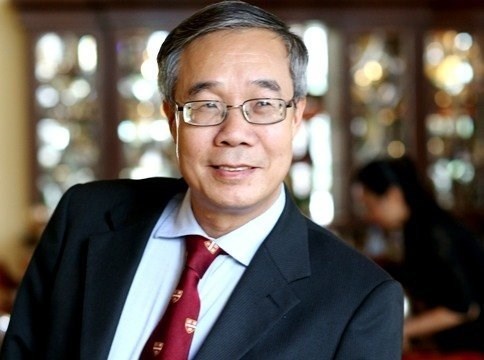
The issue of human resources is essentially about people. Building Vietnam’s human resources means developing Vietnamese people who have the stature, qualities, standards, and virtues necessary to take on the responsibilities assigned to them.
However, in recent times, the issue of “brain drain” and the loss of human resources, especially high-quality personnel, has reached alarming levels. Most recently, the country witnessed 12 out of 13 champions of the intellectual competition “The Road to Mount Olympia” receiving scholarships to study abroad, and after completing their studies, most of them stayed to work for foreign companies and organizations. What causes high-quality human resources to often stay abroad to work?
To answer this question, the Vietnam Education Online Newspaper had a conversation with Mr. Tran Duc Canh, former Member of the Northeast Massachusetts Intercollegiate Council, who holds a Master’s degree in Economics and completed the Senior Executive Fellows program at the John F. Kennedy School of Government at Harvard University, USA. Mr. Canh also has 16 years of experience in managing and developing policies for Human Resource Training and Development Programs in Massachusetts.
Mr. Tran Duc Canh believes that when one becomes a world-class scientist, their scientific research topics are no longer confined to the boundaries of a single country. Therefore, they will stay where the best conditions for their work exist.
However, it cannot be said that working or studying abroad means not contributing to the homeland, because wherever a Vietnamese person goes or lives, they are still Vietnamese. For the sake of their work, their future, or the scientific topic they consider the most important in their life, many choose to stay abroad to work.

Mr. Tran Duc Canh
Mr. Canh also acknowledges that the decision to return or stay abroad is a difficult one. Many people have weighed the pros and cons of returning or staying, and if there are no other binding factors, the scale often tips towards staying in a country where their talent can be fully utilized, especially in the scientific community. The biggest challenge currently is that the working environment and conditions in the country have too many shortcomings, limiting the development of young talent. This is no longer a surprise to many people.
Mr. Tran Duc Canh agrees with the notion of “brain drain,” but he believes it can be understood in different ways. For example, in the case of Professor Ngo Bao Chau and many young Vietnamese scientists abroad, it cannot be called “brain drain,” because they have gradually created a bridge between Vietnamese science and the development of global science. They look towards Vietnam in various ways—connecting young intellectuals in the country to study and work abroad, and conversely, attracting high-quality human resources from around the world to Vietnam to exchange experiences.
Mr. Canh also states that contributing to the country by high-quality human resources does not necessarily require returning to the homeland. In fact, working abroad can offer certain advantages for contributing to national development.
For example, at MIT (Massachusetts Institute of Technology, USA), there are many professors of Chinese descent who have created opportunities for many Chinese students to study and research in the US, and then return to their country. This force has made significant contributions to the development of science and technology in China over the past three decades.
Mr. Canh and his colleagues in the scientific community initiated a similar program for Vietnamese students 15 years ago at several universities in the US, but the numbers remain modest.
Returning to the story of attracting human resources for the nation, how can we attract human resources? This is also one of the nine solutions proposed by the government to innovate and develop the education system.
Mr. Tran Duc Canh believes that the most important internal factor for developing human resources is the structure of the education and training system, in addition to the way personnel are used and the working environment.
The key is that the current education reform must be based on a holistic approach, then connect the parts in a synchronized manner. According to him, the operational structure of society in general and the education sector, in particular, is not aligned.
In reality, during the training process, the input may be good, but the “product” is poor, which requires a reevaluation of the “middle section”—that is, how the training is conducted. Moreover, the output of universities is currently distorted, where capable individuals are not utilized, while less capable individuals end up in good positions. Therefore, the motivation for talented individuals to excel is diminished when they see daily examples like these, which dishearten them.
“I may be the top student in the class, but if someone who is the worst in the class gets a position that has been my dream for a long time, then what’s the point of excelling? Fairness and transparency in the recruitment and utilization of personnel are the most crucial breakthrough in education and social reform,” Mr. Canh said.
According to Mr. Tran Duc Canh, the human resource development plan must be closely linked to economic and social development in a broad sense. Necessary information and data must be regularly updated through research, analysis, evaluation, and broad discussion in forums. Agencies, universities, and training centers will conduct their own research and refer to necessary documents to create their own training plans.
To develop an effective human resource development plan for Vietnam, the current challenge is the many inconsistencies in macroeconomic development orientation and strategy. However, on a broader level, we can still outline a model for human resource development over the next 10 to 20 years. Reliable research on future industry development needs will continue to be updated and adjusted, providing a good forecast for universities to plan their training programs, closely aligned with the needs of economic and social development.
Mr. Tran Duc Canh suggests that a model can be implemented under the current economic and social conditions, aiming to develop into an industrialized country in the future, provided the government focuses on investing and building a stronger human resource base.
“It is estimated that by 2035, the population will be 117 million people, with 52% of the population in the labor force aged 25-64. The proportion of trained individuals will account for 53.5% compared to 17% currently. At that time, 30% of the population will have graduated from college or higher, and 20% from university or higher. To progress towards true industrialization and service development, we must build a human resource base that is both large in quantity and high in quality, while significantly improving the working environment, in order to realize the industrialization and modernization plan for the country over the next 20 years,” Mr. Tran Duc Canh affirmed.
Source: http://giaoduc.net.vn/Giao-duc-24h/Chay-mau-chat-xam-the-nao-lam-o-dau-cung-la-cong-hien-post148925.gd